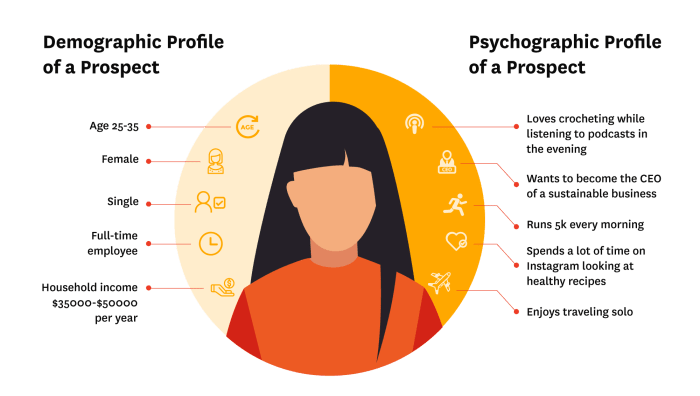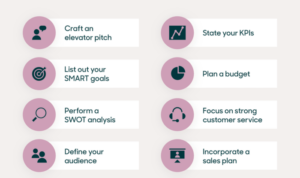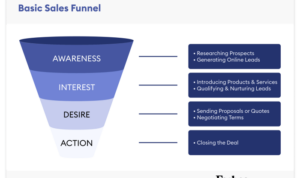Kicking off with Understanding Audience Psychographics, this topic dives into the minds of consumers, revealing key insights that drive marketing strategies. From demographics to psychographics, get ready to explore the factors that shape consumer behavior in the marketplace.
Introduction to Audience Psychographics: Understanding Audience Psychographics
Audience psychographics is all about diving deep into the minds and behaviors of your target audience to understand what makes them tick. It goes beyond basic demographics like age and gender, focusing on values, interests, attitudes, and lifestyle choices that shape consumer behavior.
How Audience Psychographics Differ from Demographics
When we talk about demographics, we’re looking at the basic characteristics of a group of people. This includes things like age, gender, income, and education level. On the other hand, psychographics delve into the personalities, beliefs, and motivations that influence consumer decisions. It’s like going from surface-level details to the juicy stuff that really drives action.
Benefits of Understanding Audience Psychographics for Businesses
- Targeted Marketing: By knowing what makes your audience tick, you can tailor your messaging and products to resonate with them on a deeper level.
- Improved Product Development: Understanding psychographics helps businesses create products and services that align with the values and preferences of their target market.
- Enhanced Customer Experience: When you know what your audience cares about, you can provide personalized experiences that build loyalty and trust.
- Effective Communication: Psychographics can guide the tone, language, and channels you use to connect with your audience, increasing the impact of your marketing efforts.
Creating Audience Personas

Creating audience personas is all about getting to know your audience on a deeper level. It involves collecting data and insights to create fictional representations of your ideal customers. These personas are detailed profiles that include demographic information, interests, behaviors, goals, challenges, and more.Audience personas help in understanding psychographics by providing a clear picture of who your target audience is and what makes them tick.
By understanding their motivations, values, and preferences, businesses can tailor their marketing strategies to resonate with their audience on a more personal level.
How Businesses Use Audience Personas
- Businesses use audience personas to personalize their marketing messages and content to better connect with their target audience.
- They use personas to identify the pain points and needs of their customers, allowing them to address these issues effectively in their products or services.
- Persona research helps in determining the most appropriate channels and platforms to reach and engage with the target audience.
- By understanding the interests and preferences of their audience, businesses can create targeted advertising campaigns that are more likely to resonate with potential customers.
Identifying Audience Values and Beliefs
Identifying audience values and beliefs is crucial for businesses to create targeted marketing campaigns that resonate with their target audience. By understanding what their audience prioritizes and believes in, companies can tailor their messaging to establish a deeper connection with their customers.Values and beliefs play a significant role in influencing purchasing decisions. When a brand aligns with the values and beliefs of their audience, it creates a sense of trust and loyalty.
Consumers are more likely to choose a brand that reflects their own values and beliefs, leading to increased customer retention and brand advocacy.
Examples of Brands Aligning with Audience Values
- Patagonia: The outdoor clothing company is known for its commitment to environmental sustainability. By promoting eco-friendly practices and supporting environmental causes, Patagonia attracts customers who share the same values of protecting the planet.
- Dove: Dove’s “Real Beauty” campaign challenges traditional beauty standards and advocates for body positivity. By celebrating diversity and inclusivity, Dove resonates with consumers who value authenticity and self-acceptance.
- Ben & Jerry’s: The ice cream brand is dedicated to social activism and supports various social justice causes. By taking a stand on important issues and using their platform to drive change, Ben & Jerry’s connects with socially conscious consumers who value corporate social responsibility.
Analyzing Audience Lifestyles

Understanding audience lifestyles is crucial in deciphering audience psychographics as it provides insight into how individuals live, what they prioritize, and how they spend their time. By analyzing audience lifestyles, marketers can tailor their messaging and offerings to align with the preferences and habits of their target audience.
Role of Lifestyle Analysis
Lifestyle analysis involves examining factors such as daily routines, hobbies, interests, values, and social behaviors of individuals within a specific demographic. By understanding these aspects, marketers can create more personalized and relevant marketing strategies that resonate with their target audience.
- Conduct surveys and interviews to gather data on audience preferences and behaviors.
- Utilize social media listening tools to track online conversations and interactions related to lifestyle topics.
- Analyze purchase patterns and consumer behavior to identify lifestyle trends and preferences.
Impact on Consumer Behavior
Lifestyle preferences play a significant role in shaping consumer behavior as they influence the products and services individuals choose to purchase. For example, individuals with an active lifestyle may be more inclined to buy fitness-related products, while those with a focus on sustainability may prefer eco-friendly options. By understanding audience lifestyles, marketers can create targeted campaigns that appeal to the specific interests and values of their target audience.
Segmenting Audiences based on Psychographics
When it comes to audience segmentation in psychographics, it involves dividing a target market into distinct groups based on psychological characteristics such as values, beliefs, attitudes, interests, and lifestyles. This allows businesses to tailor their marketing strategies to specific segments that share similar psychographic profiles.
Benefits of Segmenting Audiences based on Psychographics
- Personalized Marketing: By understanding the unique characteristics and behaviors of different audience segments, businesses can create personalized marketing messages that resonate with each group.
- Increased Engagement: Audience segmentation based on psychographics helps in creating targeted campaigns that are more likely to capture the attention and interest of the intended audience, leading to higher engagement rates.
- Improved ROI: By focusing marketing efforts on specific audience segments with relevant messages, businesses can achieve a higher return on investment as they are more likely to convert leads into customers.
Examples of Successful Audience Segmentation Strategies
- In the fitness industry, companies like Peloton have effectively segmented their audience based on psychographics by targeting individuals who are passionate about health and wellness, leading to the creation of a loyal customer base.
- Beauty brands like Glossier have successfully segmented their audience by focusing on consumers who value minimalistic and natural beauty products, resulting in a strong brand following among this specific demographic.
- Automotive companies like Tesla have utilized psychographic segmentation to target environmentally-conscious consumers who prioritize sustainability, positioning their electric vehicles as a desirable choice for this audience.
Tailoring Content to Match Psychographic Profiles
When it comes to tailoring content to match psychographic profiles, businesses need to understand the unique characteristics, values, beliefs, and lifestyles of their target audience. By doing so, they can create content that resonates with specific psychographic segments and effectively engage with their customers on a deeper level.
Tips for Creating Content that Resonates
- Conduct thorough research: Take the time to understand the psychographic profiles of your audience through surveys, interviews, and data analysis.
- Create audience personas: Develop detailed personas that represent different psychographic segments, including their preferences, motivations, and behaviors.
- Speak their language: Use the same tone, style, and vocabulary that resonates with each psychographic profile to establish a connection with your audience.
- Address their pain points: Identify the challenges, concerns, and aspirations of each psychographic segment and tailor your content to provide solutions and valuable insights.
Examples of Brands Tailoring Content, Understanding Audience Psychographics
Apple
is a great example of a brand that effectively tailors content to match psychographic profiles. They understand their audience’s desire for innovation, simplicity, and high-quality products, which is reflected in their sleek and minimalist marketing campaigns.
Nike
is another brand that excels at creating content that resonates with specific psychographic segments. By showcasing stories of perseverance, empowerment, and achievement, Nike connects with their audience on an emotional level, inspiring them to push their limits and strive for greatness.





